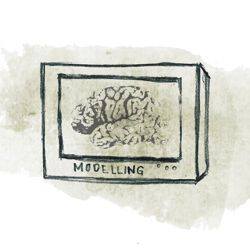Team:UCL/Modeling
From 2013.igem.org
(Difference between revisions)
| (7 intermediate revisions not shown) | |||
| Line 50: | Line 50: | ||
<p class="minor_title">Modelling The Treatment And Finding New Parts</p> | <p class="minor_title">Modelling The Treatment And Finding New Parts</p> | ||
<p class="abstract_text" style="color:#404040;"> | <p class="abstract_text" style="color:#404040;"> | ||
| - | + | Mathematical modelling provides a powerful tool for scientists of all disciplines, allowing inspection and manipulation of a system in ways which are unachievable in the lab. In the context of biology, we can use mathematical models to study the behaviour of a single cell or an entire ecosystem. In fact, inspecting a mathematical model is very much like a laboratory experiment – the main difference being that in modelling, the environment is artificial. <br><br> | |
</p> | </p> | ||
<p class="abstract_text" style="color:#C14645;"> | <p class="abstract_text" style="color:#C14645;"> | ||
| Line 59: | Line 59: | ||
<div class="col_right"> | <div class="col_right"> | ||
| - | <a href="https://static.igem.org/mediawiki/2013/f/f3/Twobrain.png" data-lightbox="image-1" title=" | + | <a href="https://static.igem.org/mediawiki/2013/f/f3/Twobrain.png" data-lightbox="image-1" title="UCL iGEM 2013"> |
<img src="https://static.igem.org/mediawiki/2013/f/f3/Twobrain.png"> | <img src="https://static.igem.org/mediawiki/2013/f/f3/Twobrain.png"> | ||
</a> | </a> | ||
| Line 72: | Line 72: | ||
<div class="col_illustration"> | <div class="col_illustration"> | ||
| - | <a href="https://static.igem.org/mediawiki/2013/ | + | <a href="https://static.igem.org/mediawiki/2013/a/aa/Modelling_pic.jpg" data-lightbox="image-1" title="Modelling Overview UCL iGEM 2013"> |
| - | <img src="https://static.igem.org/mediawiki/2013/ | + | <img src="https://static.igem.org/mediawiki/2013/a/aa/Modelling_pic.jpg"> |
</a> | </a> | ||
</div> | </div> | ||
| Line 81: | Line 81: | ||
<p class="abstract_title">Model Overview</p> | <p class="abstract_title">Model Overview</p> | ||
<p class="abstract_text"> | <p class="abstract_text"> | ||
| - | + | Mathematical modelling provides a powerful tool for scientists of all disciplines, allowing inspection and manipulation of a system in ways which are unachievable in the lab. In the context of biology, we can use mathematical models to study the behaviour of a single cell or an entire ecosystem. In fact, inspecting a mathematical model is very much like a laboratory experiment – the main difference being that in modelling, the environment is artificial. | |
</p> | </p> | ||
</a> | </a> | ||
| Line 94: | Line 94: | ||
<div class="col_illustration"> | <div class="col_illustration"> | ||
| - | <a href="https://static.igem.org/mediawiki/2013/ | + | <a href="https://static.igem.org/mediawiki/2013/e/e7/Display_small.png" data-lightbox="image-1" > |
| - | <img src="https://static.igem.org/mediawiki/2013/ | + | <img src="https://static.igem.org/mediawiki/2013/e/e7/Display_small.png"> |
</a> | </a> | ||
</div> | </div> | ||
<div class="col_abstract"> | <div class="col_abstract"> | ||
| - | <a href="https://2013.igem.org/Team:UCL/Modeling/ | + | <a href="https://2013.igem.org/Team:UCL/Modeling/Two"> |
| - | <p class="abstract_title"> | + | <p class="abstract_title">Simulation Results</p> |
<p class="abstract_text"> | <p class="abstract_text"> | ||
| - | + | For all the complex calculations and mechanisms behind a model, it is without much worth if it cannot produce useful results. In general, 'useful results' are defined as successful predictions about the effects of modifying some parameter - if we can use a model to determine the effect of each variable upon the outcome, we can better design our system in the real world. | |
</p> | </p> | ||
</a> | </a> | ||
| Line 115: | Line 115: | ||
<div class="row_small"> | <div class="row_small"> | ||
| - | <div class="col_illustration" | + | <div class="col_illustration"> |
| - | + | <a href="https://static.igem.org/mediawiki/2013/6/69/University_of_Westminster.png" data-lightbox="image-1" > | |
| + | <img src="https://static.igem.org/mediawiki/2013/6/69/University_of_Westminster.png"> | ||
| + | </a> | ||
| + | </div> | ||
<div class="col_abstract"> | <div class="col_abstract"> | ||
| - | <a href="https://2013.igem.org/Team:UCL/Modeling/ | + | <a href="https://2013.igem.org/Team:UCL/Modeling/Westminster"> |
| - | <p class="abstract_title"> | + | <p class="abstract_title">Westminster collaboration</p> |
<p class="abstract_text"> | <p class="abstract_text"> | ||
| - | + | Since Westminster's iGEM team had not produced a model of their own, and their project has several similarities to ours, we have constructed an additional model, also in C#, and sent this to Westminster's team for them to use. The model simulates bed bugs moving randomly in a cubic room. One of their proposed "blood traps" is integrated into the simulation, which visually demonstrates bed bugs being attracted and then subsequently killed by the device. | |
</p> | </p> | ||
</a> | </a> | ||
Latest revision as of 03:56, 5 October 2013
DRY LAB
Modelling The Treatment And Finding New Parts
Mathematical modelling provides a powerful tool for scientists of all disciplines, allowing inspection and manipulation of a system in ways which are unachievable in the lab. In the context of biology, we can use mathematical models to study the behaviour of a single cell or an entire ecosystem. In fact, inspecting a mathematical model is very much like a laboratory experiment – the main difference being that in modelling, the environment is artificial.
Click the abstracts below to read more.
 "
"




